

a miniature Zebu calf
miniature Zebu are naturally tiny without dwarfism
photo source: Pinterest
disclaimer: read about miniature Zebu dwarfism
Dwarfism in Cattle: Most forms of dwarfism are inherited and result from mutated genes. These mutations impair cartilage and bone formation in early development and results in various types of dwarfism. Some forms of dwarfism result from environmental factors that influence embryonic development, such as the BVD virus (bovine viral diarrhea), fungal toxins, plant poisons, or a manganese deficiency, during gestation. However, most forms of dwarfism in cattle occur when a calf receives one or two mutated genes from the parents.
Types of Dwarfism in cattle vary, according to the specific mutation. In general, dwarfism causes shorter stature, and varying degrees of deformities in the limbs, joints, head and spine. Dwarfism can be categorized as either proportionate (an overall size reduction without changes in body proportions) or disproportionate (a size reduction in one or more limbs, with changes in body proportions). Some types of dwarfism can include cleft palate, abdominal hernia or other abnormalities. Some forms of dwarfism are non-viable (lethal).
Chondrodysplasia. Disproportional dwarfism is referred to as chondrodysplasia (in the past it was also referred to as achondroplasia or chondrodystrophy). Congenital disproportionate dwarfism is described in a number of different cattle breeds with varying modes of inheritance. Chondrodysplasia disproportionate dwarfism expresses with shortened limbs in cattle.
Bulldog Dwarfism in Dexter cattle is one of the earliest described Mendelian disorders in mammals. It affects the aggrecan (ACAN) gene. Dexter dwarfism has incompletely dominant inheritance, leading to a mild form of dwarfism in heterozygotes (carriers of 1 copy). When inherited in homozygous form (calf inherits 2 copies), the lethal expression occurs, and the result is a dead aborted or stillborn calf that physically resembles a bulldog. This version of chondrodysplasia is known as BD which stands for "bulldog". There are several different mutations of the ACAN gene, as well as other genes, that are associated with the same resulting bulldog-type dwarfism (phenotype). Besides the Dexter, BD mutations have also been found in Nellore cattle of Brazil, and in a US polled Holstein bull (a single mutation with self-limiting inheritance). Dexter upgrades of New Zealand carry BD2 specifically. BD1 has existed in purebred Irish Dexters for centuries.

Dwarfism in Miniature Cattle. Most miniature cattle are naturally miniature, with no dwarfism. Some miniature cattle are small cattle that carry BD. These carriers have Irish Dexter DNA in their pedigree. The Dexter Cattle Association says a chondro cow is 2-4 inches shorter and a chondro bull is 4-6 inches shorter than they would be if they were BD-free.
Inheritance of Chondrodysplasia: BD1 is an autosomal semi-dominant lethal mutation
Miniature cattle carriers have 1 copy of a BD mutation. Since BD is a lethal mutation, if a fetus inherits 2 copies of a BD mutation, one from each parent, it is not viable.
Most herds of breeding miniature cattle (that are Dexter-derived breeds) are tested to prevent lethal bulldog calf birth defects. To understand the risk, here are the genetic probabilities that result from breeding 2 chondro positive cattle together (if both the bull and the cow are chondro carriers):
(in this figure we use A to represent the ACAN allele with a BD mutatation;
and we use a to represent a normal, non-mutated ACAN)
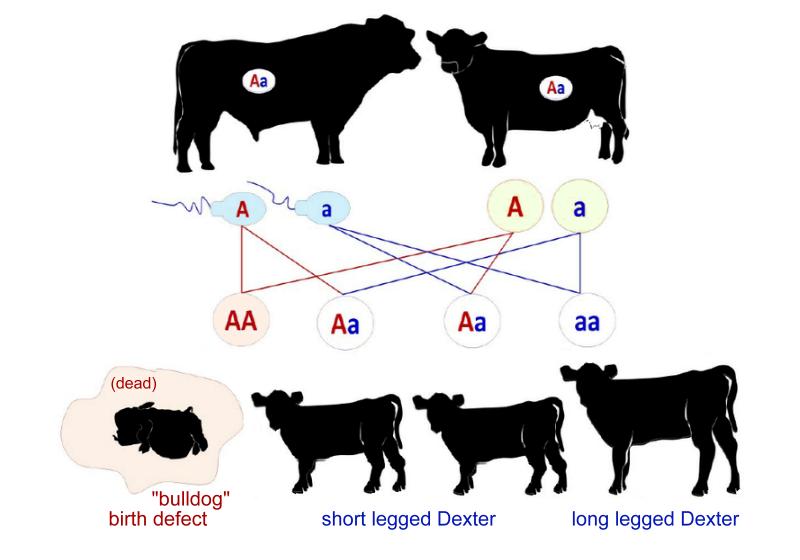
25% of the offspring are expected to be bulldog calves ("homozygous" chondrodysplasia), severe
disproportionate dwarfism. A bulldog calf is the non-viable fetus with tiny legs, a protruding tongue and a flat face that look similar to a bulldog. A dead bulldog fetus is usually aborted in mid to late pregnancy. It usually doesn't cause dystocia (calving difficulty), but if carried full term, the risk increases.
50% of the offspring are expected to be short (dwarf) cattle ("heterozygous" chondrodysplasia). 1 ACAN gene allele has the BD mutation, and the calf is affected by mild dwarfism, most notably in height. In miniature and small cattle, mature height can be reduced from 2 to 6 inches. In standard breeds, dwarfism can reduce mature height up to 8 or 9 inches.
25% of the offspring are expected to be normal cattle (chondro free or non carrier). Since both ACAN alleles inherited are normal, the calf grows to its genetically natural height. Its natural height of course, can genetically be anywhere from short to tall, depending upon its breed and its parents' natural size.
North American Miniature Cattle Breeds: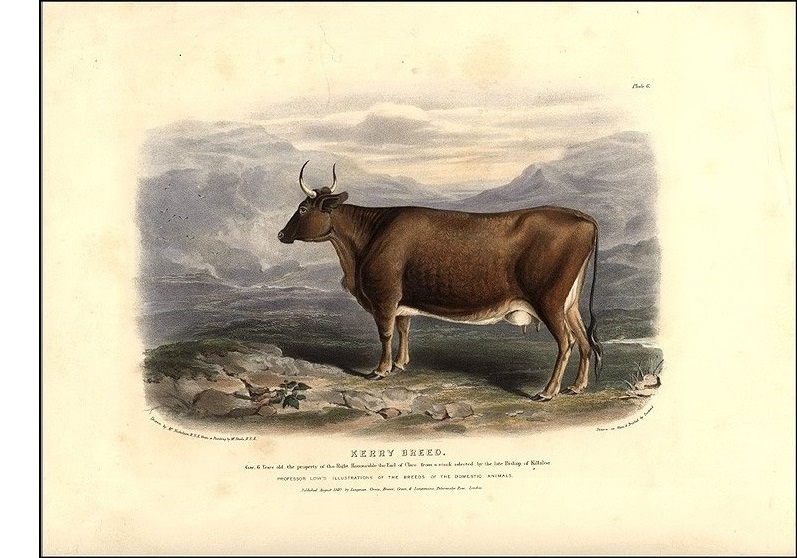
There are a number of genetic mutations in cattle that will cause dwarfism.
BELOW: chart illustrating many dwarfism mutations in Miniature Cattle
compared with dwarfism mutations in other N.A. cattle
| primary population | genetic dwarfism mutation | gene | mode of inheritance | hetero | homoz | DNA test? |
| Irish Dexter | disproportionate (bulldog) BD1 | ACAN | semi-Dominant | Dwarf | Lethal | Yes |
| upgraded NZ Dexter | disproportionate (bulldog) BD2 | ACAN | semi-Dominant | Dwarf | Lethal | Yes |
| miniature Zebu | disproportionate (bulldog) BDz | ACAN | recessive (2018) | normal | Lethal | Yes |
| mixed miniatures | disproportionate (bulldog) BD3* | ACAN? |
semi-Dominant (2018) | Dwarf | Lethal | not yet |
| mostly Angus | proportionate (long headed) D2 | PRKG2 | recessive | normal | Dwarf | Yes |
| Brahman (Florida) | proportionate; growth hormone | GH1 | recessive (2009) | normal | Dwarf | ? |
Percentage breeds of miniature cattle in North America that descend from shortie Dexter upgrading can carry BD1 |
||||||
* I am just assigning this arbitrary BD title to this mutation...
I will revert to using industry titles when they isolate & come up with them.
![]()
*BDz: In October of 2018, a new BD variant was found in a family of Miniature Zebu in Germany. UC Davis claims it is an autosomal lethal recessive. But some owners claim that heterozygous carriers may be shorter legged with more desirable conformation; if that is so, it would not be true simple recessive. It is apparently a mutation on a gene with variable penetrance or expressibility.
*BD3: There was a new semi-dominant BD variant first seen in 2019 in a miniature American Beltie cow. The University of California, Davis, VGL was planning to study it, but then the pandemic happened and I have not been able to find any current status on the research.studying it now. It is similar in etiology to both BD1 and BD2, and appears to present as homozygous (lethal) when found in compound heterozygous form.
*WMW-miniature: There is a novel mutation that appears to be an autosomal recessive dwarf variant in club calves descending from the bull, Who Made Who. Their proportions are normal, they have normal health, but are born about half the size, and mature to about half the size of their counterparts.
NOTE: The rest of this webpage is a further discussion of the BD1 mutation;
the most common dwarfism mutation found in miniature cattle; unless otherwise noted.
![]()
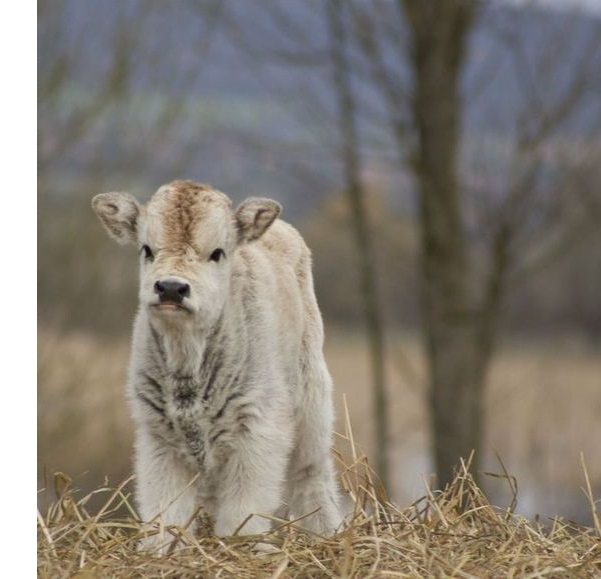 Physical effects of dwarf cattle: Low birth weight and growth restriction of long bones are the most evident symptoms of chondro dwarfism. Accompanying skeletal aberrations can affect dwarf cattle's general condition and locomotion, and may or may not include a slightly undershot jaw, pug nose, protruding eyes, bowed or twisted legs, or loose or enlarged joints. Some may suffer from breathing difficulties due to tracheal malformations, short, choppy movement, or lameness from poor feet or early onset of arthritis. Newborn chondro calves normally present with dished faces and loose hips (soft cartilage), which they outgrow (the cartilage firms up to normal), and shorter legs, especially the cannon bones. Chondro carrier miniature cattle can be quite small, and are often bred for pets. People who favor and enjoy very small cattle love their chondro carriers. Sometimes the tiniest, fuzziest, fanciest colored dwarf calves fetch high prices due to their exotic "cuteness factor".
Physical effects of dwarf cattle: Low birth weight and growth restriction of long bones are the most evident symptoms of chondro dwarfism. Accompanying skeletal aberrations can affect dwarf cattle's general condition and locomotion, and may or may not include a slightly undershot jaw, pug nose, protruding eyes, bowed or twisted legs, or loose or enlarged joints. Some may suffer from breathing difficulties due to tracheal malformations, short, choppy movement, or lameness from poor feet or early onset of arthritis. Newborn chondro calves normally present with dished faces and loose hips (soft cartilage), which they outgrow (the cartilage firms up to normal), and shorter legs, especially the cannon bones. Chondro carrier miniature cattle can be quite small, and are often bred for pets. People who favor and enjoy very small cattle love their chondro carriers. Sometimes the tiniest, fuzziest, fanciest colored dwarf calves fetch high prices due to their exotic "cuteness factor".
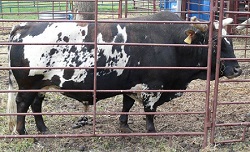 Armageddon, a condro-carrier 40" tall bucking bull. This bull was an example of a chondro carrier that has no sign of dwarfism other than a short stature; “...he was such a sweet boy, he came when called. He got so excited when he saw the trailer you'd have thought he was wild & crazy, but he just absolutely loved, LOVED to go rodeo--he loaded himself in the trailer! He was always a gent in the trailer & loading in the chutes. He begged for treats & back scratches; never ever offered to hurt his rider or any of the clowns or chute help. In this photo he was age 9; that day was the first time he was ever ridden & the little cowboy scored a 92.5! Armageddon divided his time between the pasture with his girls and the bucking arena. His legs were clean & blemish free as was the rest of him. He never had any symptoms whatsoever that he was chondro-positive except for his short legs.” (~former owner) Editorial comment: Armageddon's breeder has bred short cattle for decades, long before we fully understood the genetics. I am told that all his cattle are about the same size from having been selected small for generations, and he paid no attention to BD. His cattle were selected for soundness and conformation that apparently worked fine carrying chondro. According to owners, most lived normal lifespans with no obvious health effects. Armageddon, a condro-carrier 40" tall bucking bull. This bull was an example of a chondro carrier that has no sign of dwarfism other than a short stature; “...he was such a sweet boy, he came when called. He got so excited when he saw the trailer you'd have thought he was wild & crazy, but he just absolutely loved, LOVED to go rodeo--he loaded himself in the trailer! He was always a gent in the trailer & loading in the chutes. He begged for treats & back scratches; never ever offered to hurt his rider or any of the clowns or chute help. In this photo he was age 9; that day was the first time he was ever ridden & the little cowboy scored a 92.5! Armageddon divided his time between the pasture with his girls and the bucking arena. His legs were clean & blemish free as was the rest of him. He never had any symptoms whatsoever that he was chondro-positive except for his short legs.” (~former owner) Editorial comment: Armageddon's breeder has bred short cattle for decades, long before we fully understood the genetics. I am told that all his cattle are about the same size from having been selected small for generations, and he paid no attention to BD. His cattle were selected for soundness and conformation that apparently worked fine carrying chondro. According to owners, most lived normal lifespans with no obvious health effects. |
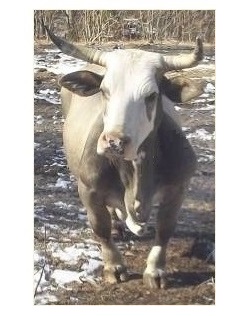 Variation of Effect: It is important to emphasize the wide variation in how much dwarfism affects different carrier cattle, and different herds of cattle. In incomplete dominant traits, inheriting one copy causes a partial effect. In the case of BD1 dwarfism, it ranges anywhere from "almost no effect" to "some effect". That is mostly in height. However many herds selected for useful family milk and meat production may be negatively affected by arthritis as they age.
Variation of Effect: It is important to emphasize the wide variation in how much dwarfism affects different carrier cattle, and different herds of cattle. In incomplete dominant traits, inheriting one copy causes a partial effect. In the case of BD1 dwarfism, it ranges anywhere from "almost no effect" to "some effect". That is mostly in height. However many herds selected for useful family milk and meat production may be negatively affected by arthritis as they age.
Penetrance and expressivity: These two genetic terms are frequently misunderstood and they certainly cause confusion in diagnosing genetic disorders and their mode of inheritance. Penetrance refers to the proportion of individuals with a given genotype expressing any or all of the phenotypic features of the disorder, i.e. not all animals with a particular genotype show phenotypic manifestations. In contrast, expressivity, or variability in clinical expression, describes the range of phenotypic effects in individuals carrying a given mutation. These two terms may overlap, particularly when used in terms of age of onset of a disorder. The penetrance and expressivity of the BD1 gene found in Irish Dexter and in percentage breeds that started out being miniaturized with Dexter dwarfism DNA, might explain why some BD carriers, and why some BD carrier herds, suffer more than others do.
 Most Miniature Cattle will probably fare better on small acreages than on large pastures. Little animals will do better when not having to share pasture and physically compete with larger animals over feed or hay. Carrier cattle might not thrive if having to hunt grass and walk all day, which might cause excessive wear & tear on their joints and shorter legs.
Most Miniature Cattle will probably fare better on small acreages than on large pastures. Little animals will do better when not having to share pasture and physically compete with larger animals over feed or hay. Carrier cattle might not thrive if having to hunt grass and walk all day, which might cause excessive wear & tear on their joints and shorter legs.
MANAGEMENT: Proper management of chondro cattle means taking whatever steps are necessary to prevent two carrier animals from breeding. That can include good fences so that chondro bulls can't get to chondro cows, or, making sure young chondro positive bull calves are castrated or separated from the cow herd well before being able to breed. Some carrier cattle breeders run only chondro negative bulls, and band (castrate) all the bull calves shortly after birth, and market them as pets or butcher steers. With that herd plan, no birth defects are possible. And, the cow herd doesn't need BD testing (a considerable cost saving in larger herds).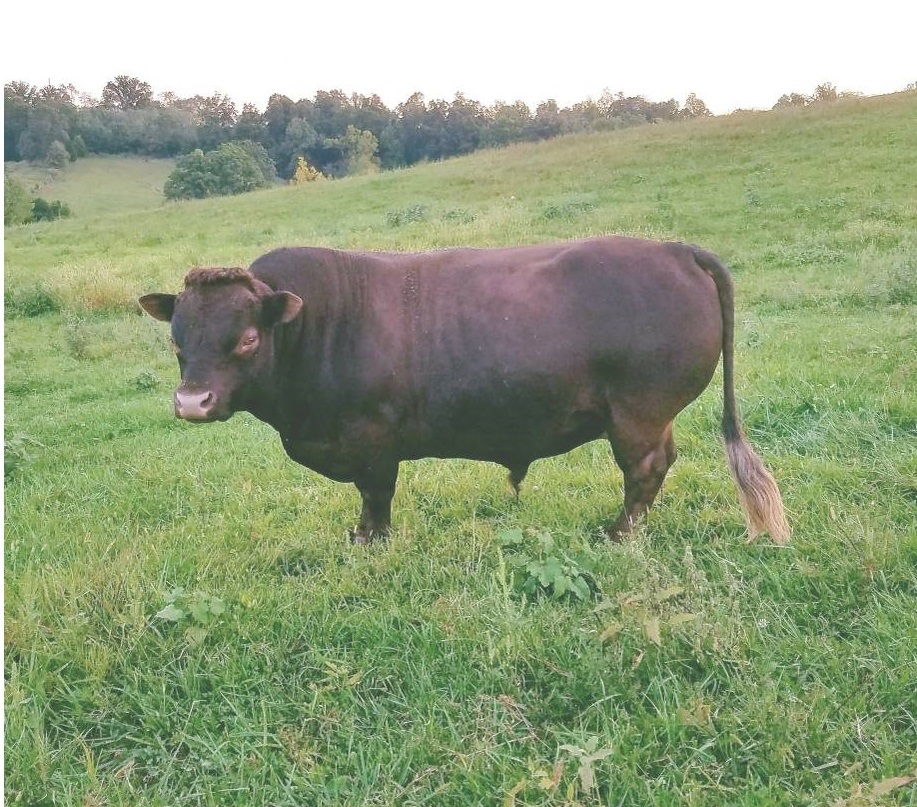
Dexter Terminology ~ Short Legged or Long Legged:
The terms “Shorty” or “Short” or “Short-Legged” may be used to describe genotype or phenotype. These terms were historically used among Dexter breeders in reference to chondro positive cattle (long before the genetics were fully understood). BD(+) cattle are usually recognizable, visibly. They often have broader or larger heads for their stature, and they usually have shortened legs (most noticeable are their short cannon bones from the knee and hock to the fetlock). Since only the skeleton and joint cartilage is affected by the BD gene, essentially, the rest of their bodies is actually still normal sized organs & muscles on a reduced frame.
Short legged and long legged may be used to describe phenotype: thick, beefy cattle (regardless of their genetic makeup) that are shorter and wider compared to taller or narrower framed herdmates. Because mini cattle breeders have been selecting for short cattle for decades (or in the case of Dexters, for centuries), there are plenty of miniature cattle around that are not dwarves. Herds of crossbred miniature cattle tested chondro free, can lack uniformity and still have both “long legged” and “short legged” cattle. Some untested “short-legged” cattle (that look like chondro carriers), may not have chondro. They may just be genetically short. However, short legged miniature cattle that look chondro positive, often are. To avoid birth defects, only DNA testing can tell breeders for sure.
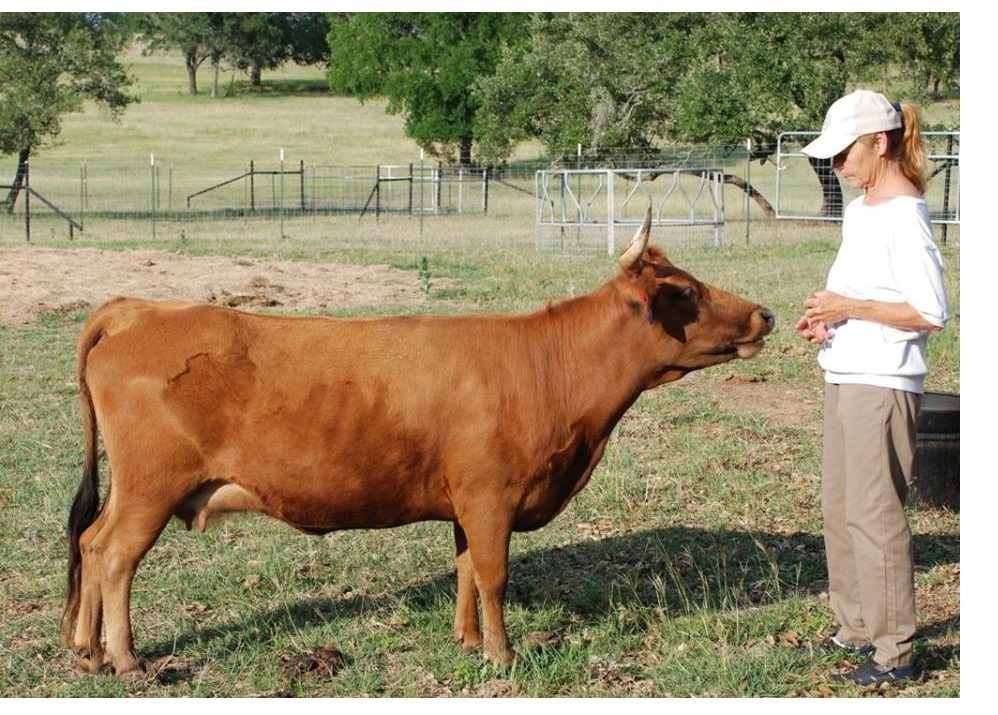 Photo above left: A naturally short little red Dexter cow, Legend Red Mona, ADCA No. 15552, who measured 40" hip height at 5 years of age. She tested non-carrier for chondro. Photo courtesy of Barbara Netti, Legend Rock Ranch, Texas, 2015.
Photo above left: A naturally short little red Dexter cow, Legend Red Mona, ADCA No. 15552, who measured 40" hip height at 5 years of age. She tested non-carrier for chondro. Photo courtesy of Barbara Netti, Legend Rock Ranch, Texas, 2015.
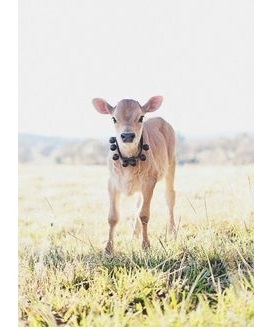 Registries and Breeding. Most breed associations do not require testing for dwarfism. Whether or not a miniature composite or breed or herd has carrier cattle within its population, is the responsibility of individual breeders, sellers and buyers to test for and manage with honest and ethical practices.
Registries and Breeding. Most breed associations do not require testing for dwarfism. Whether or not a miniature composite or breed or herd has carrier cattle within its population, is the responsibility of individual breeders, sellers and buyers to test for and manage with honest and ethical practices.
Do All Miniature Cattle need DNA testing for BD? No, not if they have no Dexter in their pedigree. Otherwise, that depends upon how reliable their pedigree is, if known. A lot of today's miniature cattle breeds are composites (crossbred cattle of known breeding) or percentage cattle that were originally developed using short-legged Dexter cattle. A general rule of thumb is, if a miniature cow or bull has, or could have a Dexter ancestor, and is unknown status, it should be tested for BD before being bred to another unknown status animal.
Testing. Calves can be DNA tested by 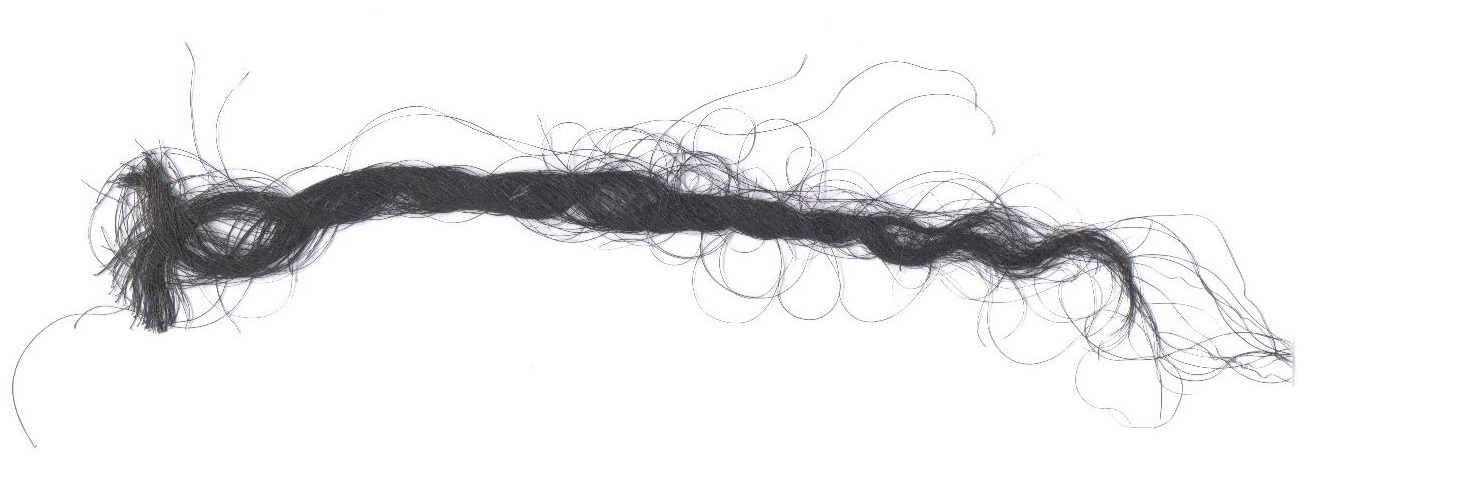 sending in 30-50 pulled hairs (including the roots) from their tail switch, to a testing lab. The tail switch hairs have the largest root bulbs and in calves, are the easiest to extract DNA from in the lab. You can pull hair from anywhere on cattle, but make sure the root bulbs of the hair are included, and they should be easily seen with the naked eye. Use a pair of pliers, a box of fresh clean plastic sealable (storage) bags, and a flashlight if needed. Be very careful not to contaminate one animal's sample with another animal's hair. As you pull and the cow pulls away, you should get a good sample, and perhaps an annoyed cow but not an upset cow. Hair samples cost less but blood or tissue samples can also be used for DNA testing in most labs.
sending in 30-50 pulled hairs (including the roots) from their tail switch, to a testing lab. The tail switch hairs have the largest root bulbs and in calves, are the easiest to extract DNA from in the lab. You can pull hair from anywhere on cattle, but make sure the root bulbs of the hair are included, and they should be easily seen with the naked eye. Use a pair of pliers, a box of fresh clean plastic sealable (storage) bags, and a flashlight if needed. Be very careful not to contaminate one animal's sample with another animal's hair. As you pull and the cow pulls away, you should get a good sample, and perhaps an annoyed cow but not an upset cow. Hair samples cost less but blood or tissue samples can also be used for DNA testing in most labs.
Parentage Verified. An animal can be proven negative for chondro by parentage verification. Cattle are "obligate negative" if both of their parents are tested negative, and they are DNA parentage verified as their offspring. In other words, two miniature cattle that are tested negative BD(-), will not produce a BD(+) positive calf when bred together. If a BD(+) calf is born from 2 BD(-) (tested or obligate) cattle, then, the only possible reasons for that (listed in order of likelihood) would be if:
DNA TESTING: The first test for chondrodysplasia became available in 2003 (with the 1st testing license given to SRC Lab in Canada). In 2006 Texas A&M got licensed to test for chondro, then UC-Davis VGL, and in time a few more. Here is a link to VGL's Biotechnology page that stays current with all DNA tests when they become available, and keeps links to all the labs available when they get licensed to perform them. Some breed registries cooperate with certain labs and offer special member discount prices for tests or panels of tests that meet the needs of their breed.
 |
“Many people haven't yet kept a lot of chondro cattle into old age, to see what the eventual damage to the skeleton looks like. This is what old age looks like for a Dexter Chondro carrier. She was 14 years old--we had her euthanized by our vet on the day that this photo was taken. You can see how much the muscles have atrophied in the hind quarters due to her severe arthritis and reduced mobility. Every Dexter chondro carrier that we have owned has eventually developed severe arthritis as they aged out, and that has been the sole reason to remove them from the herd. These females were very productive all through their lives, but it was arthritis that ended them.” ~ Patti Adams, Wakarusa Ridge Ranch, KS |
For beginners just starting out with miniature cattle, deciding whether or not to buy or breed carrier cattle is the first decision they might make. When deciding on a breed, learn the differences between crossbred, composite, purebred and fullblood cattle. Remember that BD1 is only found in Dexter DNA. Visit and talk with as many breeders as you can. Visit cattle herds in person. If present, look at carrier and non-carrier miniature cattle of all breeds, and at all ages. Be wary of breeders who ask more money for dwarf cattle than normal cattle. You will figure out what will work best for you.
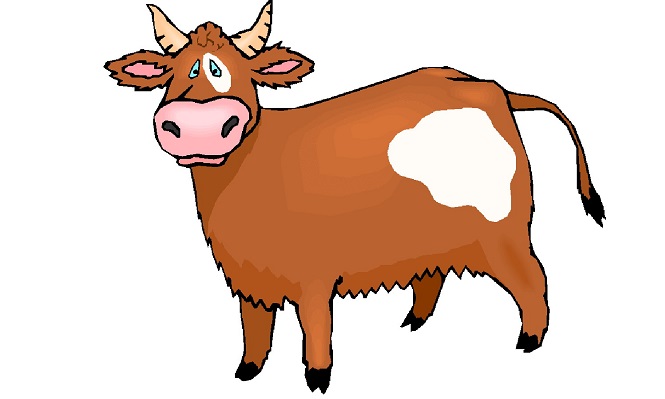
![]()
PHA occurs in several breeds of cattle. Research by Dr. Jon Beever at the University of Illinois identified the mutations responsible for PHA in cattle. He discovered that there are 2 mutations that cause PHA. The affected gene is the same gene for the different breeds, but the specific mutation associated with PHA·D in Dexter cattle is different from the PHA mutation in Maine-Anjou. PHA testing became available in the United States in 2009.
| Primary breed(s) | Genetic dwarf mutation | Mode of inheritance | heterozygous | homozygous | DNA testable? |
| Dexter DNA | PHA·D | recessive | normal | Lethal | Yes |
| Maine Anjou | PHA | recessive | normal | Lethal | Yes |
| DNA Labs. A current list of DNA tests available for cattle genetic conditions, and list of the labs that offer them. | |||||
PHA similarities to BD:
PHA·D, like BD1, was a mutation that originated in the Dexter breed, and is found exclusively in Dexters and cattle that have Dexter in their pedigree. PHA is characterized by incomplete development of the lungs and severe subcutaneous fluid accumulation. The "WaterBaby" aborted calf is (in some ways) similar to a "BullDog" aborted calf.
PHA differences from BD1:
All untested Miniature Cattle that are Dexters or could be Dexter composites should be tested for BD1 and PHA·D before being bred, to eliminate the 25% chance of either Bulldog or WaterBaby birth defects. PHA waterbaby calf associated dystocia can lead to death of the cow. A genetic test specific for the Dexter PHA mutation (PHA·D) is available from the UC Davis Vet Genetics Lab (VGL).
The VGL PHA test does not detect the Maine Anjou /Shorthorn mutation. Those breeds can be tested for the non-Dexter PHA through their breed associations, such as the Maine Anjou, Shorthorn, and Simmental registries.
![]()
Resources:
Heritable (genetic) Traits, Conditions, Diseases of Cattle published by Homestead & Miniature Cattle Resource Directory website, owned by the Homestead Cattle Association (HCA)
DNA Tests & Labs This webpage, also published by the Homestead Cattle Association (HCA) lists all known genetic labs, updated regularly, with list of which DNA tests each lab offers, for traits, conditions & diseases of cattle in North America. Note: If you order your own DNA tests on your cattle directly, you own the results. If you pay a registry to order the DNA tests, the registry owns the test result: You do not own the results, the DNA lab will not give you a copy of those results, and you have no control over how or where they are published. There have been cases (when the registry was not reliable) that the cattle owners did not even get the results. So ask questions before you order DNA tests for your cattle.
UCDavis VetGen Lab Animal Biotechnology > DNA Companies. A comprehensive list of DNA tests available for cattle, and list of all the labs that currently offer these tests. This is an older page, not maintained or updated recently.
UCDavis VetGen Lab Cattle | Dexter Genetic Tests. The Veterinary Genetics Laboratory offers genetic tests specific to Dexter Cattle.
UCDavis VetGen Lab Miniature Zebu Bulldog Dwarfism (Recessive Chondrodysplasia). Mini Zebu carriers – 1 copy of the BDz mutation are normal but can produce affected offspring if bred to another carrier.
CHONDRODYSPLASIA, excellent article with photos by Carol Davidson, written 2008, published 2014 by the American Dexter Cattle Association.
Dwarfism in Cattle by Dottie Love 2014, an excellent report.
Dwarfism How to Identify it and why it needs to be kept out of your herd. Information Assembled By: Eric J. Redeker, The Vertically Challenged Cattle Company, Miniature Texas Longhorns.
The 5 ‘W’s” of PHA, DexterCattle.ca.
PHA article on Thomas' Dexter's website.
The Vet Book ~ Dwarfism in Cattle | Veterinary Medicine on Facebook | Diseases of Cattle | Dwarfism (Chondrodysplasia)
![]()
Sources:
De novo stop-lost germline mutation in FGFR3 causes severe chondrodysplasia in the progeny of a Holstein bull. By I M Häfliger, A Letko, L Murgiano, C Drögemüller. Animal Genetics 2020 April 2.
BDz: “A recessive lethal chondrodysplasia in a miniature zebu family results from an insertion affecting the chondroitin sulfat domain of aggrecan” Struck, Ann-Kathrin et al.BMC genetics vol. 19,1 91. 11 Oct. 2018, doi:10.1186/s12863-018-0678-8 "We found a novel mutation in ACAN causing a recessive lethal chondrodysplasia in Miniature Zebu cattle. A diagnostic test for this mutation is now available for Miniature Zebu breeders preventing further cases of bulldog syndrome by targeted matings. To the authors’ best knowledge, this is the first case of a Miniature Zebu associated with an ACAN mutation."
NOTE: This recently discovered BDz variant was first isolated in a family of miniature Zebu on a farm in Germany, however, this mutation is North American in origin, and is a recessive BD mutation found in the American miniature Zebu population. It is unknown yet, how old this mutation is, or how widespread it is, since the pedigrees of the German carriers were not recorded. UCDavis VGL has a test for BDz.
 Rapid discovery of De novo deleterious mutations in cattle enhances the value of livestock as model species. Bourneuf E, Otz P, Pausch H, Jagannathan V, Michot P, Grohs C, Piton G, Ammermüller S, Deloche M-C, Fritz S. Sci Rep. 2017;7.
Rapid discovery of De novo deleterious mutations in cattle enhances the value of livestock as model species. Bourneuf E, Otz P, Pausch H, Jagannathan V, Michot P, Grohs C, Piton G, Ammermüller S, Deloche M-C, Fritz S. Sci Rep. 2017;7.
Germline mutation within COL2A1 associated with lethal chondrodysplasia in a polled Holstein family. Reinartz S, Mohwinkel H, Sürie C, Hellige M, Feige K, Eikelberg D, Beineke A, Metzger J, Distl O. Germline mutation within COL2A1 associated with lethal chondrodysplasia in a polled Holstein family: https://link.springer.com/content/pdf/10.1186%2Fs12864-017-4153-0.pdf
CONCLUSION: SELF-LIMITING. The bulldog calf syndrome is a lethal form of the inherited congenital chondrodysplasias. Among the progeny of the polled Holstein bull Energy P cases of aborted lethal chondrodysplasia were observed. Pedigrees of the cases and the frequency of 3/8 cases among the offspring of Energy P at our teaching and experimental farm Ruthe (LuFGRuthe) supported the assumption of a germline mutation with a mosaic of normal and defective sperm. This mutation is located within the collagen triplehelix repeat and causes an exchange of glycine to serine (p.996G > S) in COL2A1. This private single nucleotide variant (SNV) was present as a gonadal mosaic in sperm of the bull. All affected calves were in a heterozygous state whereasnormal half-siblings and all dams of the progeny from Energy P were missing this SNV. Validation in polled Holstein bulls and normal Holstein calves randomly sampled from several herds and from the LuFG Ruthe confirmed this SNV as private. Conclusions:The identified spontaneous missense mutation within COL2A1 is most likely the cause of lethal chondrodysplasia in the progeny of Energy P through a dominant negative effect. This example suggests that it would be beneficial to conduct whole genome sequencing of sperm from bulls widely used in artificial insemination in order to detect germline mosaicism. BMC Genomics. 2017;18(1):762.
PRKG2 Gene Mutation for Dwarfism (D2) Fact Sheet. D2 was recognized as a specific strain of dwarfism on September 7, 2007. D2 is caused by a recessive mutation on a single cattle chromosome. Cattle that are homozygous for the mutated gene will exhibit D2. Revised 06/2016. Dwarfism in Angus cattle is caused by a mutation in the GMP dependent, type II protein kinase (PRKG2) gene.
Lethal chondrodysplasia in a family of Holstein cattle is associated with a de novo splice site variant of COL2A1. Familial Chondrodysplasia in Holstein Calves (2004) - https://journals.sagepub.com/doi/abs/10.1177/104063870401600406 - Jorgen S. Agerholm, Jens Arnbjerg and Ole Andersen Agerholm JS, Menzi F, McEvoy FJ, Jagannathan V, Drögemüller C. BMC Vet Res. 2016;12(1):100.
Hydrops associated with chondrodysplasia of the fetus in a miniature Scottish Highland cow. Cabrera LC, McNabb BR, Woods SE, Cartoceti AN, Busch RC.J Am Vet Med Assoc. 2016;248(5):552–6. This was a report about a mini Highland done by student authors without the understanding that the little cow was not a fullblood Scottish Highland, and carried the Dexter BD mutation, as do so many North American miniature cattle "breeds" or composites.
Dwarfism in Cattle. Irish Cattle Breeding Federation; ICBF.com. 2016.
Prevent calf abnormalities by managing beef cow diets. December 2015. Dan Buskirk, Michigan State University Extension.
Dwarfism in Cattle, video by Karlee Logan published on 20 January 2015.
Bulldog dwarfism in Dexter cattle is caused by mutations in ACAN. Mammalian Genome:Authors: Julie A. L. Cavanagh, Imke Tammen, Peter A. Windsor, John F. Bateman, Ravi Savarirayan, Frank W. Nicholas, Herman W. Raadsma, Springer Science+ Business Media. N.p., 28 June 2007, November 2007, Volume 18, Issue 11, pp 808–814. Web. 27 May, 2014, updated and re-published.
Chondrodysplasia. Davidson, Carole, N.p., 2008. Web. 29 May 2014, American Dexter Cattle Association, DexterCattle.org.
Dwarfism in Cattle, By Dottie Love, Fancher Love Ranch, 2014.
Genetic and PathoAnatomical Features of the Bovine Prenatal Lethal Chondrodysplasia Hereditary Genetics ISSN:2161-1041, Genetics an open access journal, Volume 3 • Issue 4 • 1000132. Moura et al., Hereditary Genetics 2014, 3:4. This is an open-access article distributed under the terms of the Creative Commons Attribution License, which permits unrestricted use, distribution, and reproduction in any medium, provided the original author and source are credited. http://dx.doi.org/10.4172/2161-1041.1000132. Corresponding author: Dr. Enio Moura, Service of Medical Genetics, Faculty of Veterinary Medicine, Pontifícia Universidade Catolica do Paraná (PUCPR), Curitiba, Parana, Brazil, Tel: 55 41 3274-4501; E-mail: enio.moura@pucpr.br Rec date: Apr 15, 2014. Copyright: ©2014 Moura E, et al., Pub date: Aug 25, 2014.


Hereditary Genetics: Current Research Genetic and PathoAnatomical Features of the Bovine Prenatal Lethal Chondrodysplasia,
Figure 1: bulldog calf Figure 2: Risk of prenatal lethal chondrodysplasia in a mating of short-legged Dexters.
 Current Research Genetic and PathoAnatomical Features of the Bovine Prenatal Lethal Chondrodysplasia provides an overview of the current state of knowledge regarding the genetics and anatomical pathology of bovine prenatal lethal chondrodysplasia, describing the characteristic phenotype of affected animals and the Mendelian aspect of genetic inheritance. It also is the first record of a spontaneous occurrence of another chondrodysplasia mutation in the Nelore (right), a popular Zebu breed in Brazil.
Current Research Genetic and PathoAnatomical Features of the Bovine Prenatal Lethal Chondrodysplasia provides an overview of the current state of knowledge regarding the genetics and anatomical pathology of bovine prenatal lethal chondrodysplasia, describing the characteristic phenotype of affected animals and the Mendelian aspect of genetic inheritance. It also is the first record of a spontaneous occurrence of another chondrodysplasia mutation in the Nelore (right), a popular Zebu breed in Brazil.
Figure 1 ABOVE LEFT: shows several of the abnormalities in an affected Nellore calf with a gestational age of approximately eight months. This is another BD mutation, but the bulldog calf defect is the same.
Figure 2 ABOVE RIGHT: [BD1] ...in the Dexter is caused by incompletely dominant mutations in the aggrecan gene (ACAN gene). If we represent the ACAN gene as “a” and the mutant allele as “A”, the long-legged Dexter has an “aa” genotype (homozygote), the short-legged Dexter has an “Aa” genotype (heterozygote), and the bulldog Dexter has an “AA” genotype (homozygote). Thus, the homozygosity of the “A” allele causes a defect in the endochondral ossification that is so severe that it is incompatible with life. Therefore, based on the principle of Mendelian genetics, if two heterozygote Dexters are crossed, there is a 25% chance of the offspring having long legs, a 50% chance that it will have short legs, and a 25% chance that it will be affected by BPLC (a bulldog calf), as illustrated in Figure 2. The inheritance pattern that we have described is classically known as incomplete dominance (semidominance). Moura E, Prado A, Pimpão C, Murakami C, Ribeiro D. Hereditary Genetics 3 (132): 2161–1041.1000132. 2014
“The Truth: Every Living Thing is a Genetic Defect Carrier,” Decker, Jared E., University of Missouri assistant professor and beef genetics specialist. N.p. Web. 06 June 2014.
Breeding Matters – Inbreeding vs. Line Breeding, By Morgan Hartman / October 20, 2014.
Deletion in the EVC2 Gene Causes Chondrodysplastic Dwarfism in Grey Alpine cattle or Tyrolean Grey Cattle, (Australian Brown Swiss breed) Published: July 11, 2014, Murgiano L, Jagannathan V, Benazzi C, Bolcato M, Brunetti B, Muscatello LV, et al. (2014) and, Deletion in the EVC2 Gene Causes Chondrodysplastic Dwarfism in Tyrolean Grey Cattle. PLoS ONE 9(4): e94861, Editor: Claire Wade, University of Sydney, Australia.
Chondrodysplasia, by Robyn Snelgar, BD2 New Zealand Dexter mutation; dextercattle.nz.
Birth of a Bulldog Dwarf fetus on a farm in South Africa -Interesting- photos.
‘‘Snorter’’ Dwarfism in Herefords. Jones JM, Jolly RD. Dwarfism in Hereford cattle: a genetic morphological and biochemical study. NZ Vet J. 1982; 30:185–189. Reported and updated online Aug 22 2013. The American Hereford Association (AHA) stopped registering dwarfism carriers, and in time reported no dwarfism left in the Hereford breed.
 Dexter Bulldogs and Waterbabies Belle Fourche Farms, April 5, 2012
Dexter Bulldogs and Waterbabies Belle Fourche Farms, April 5, 2012
Livestock > Genetics > Avoiding The Worst, Joe Roybal, editor & Wes Ishmael, contributing editor | BeefMagazine.com | February 2010
‘‘Long-Nosed’’ Dolichocephalic Dwarfism in the Angus breed. (left) Koltes JE, Mishra BP, Kumar D, et al. A nonsense mutation in cGMP-dependent type II protein kinase (PRKG2) causes dwarfism in American Angus cattle. Proc Natl Acad Sci U S A. 2009; 106:19250–19255.
Morphology and physiology of the epiphyseal growth plate. Burdan F, Szumilo J, Korobowicz A. Folia Histochem Cytobiol. 2009;47(1):5–16., and, Mackie EJ1, Ahmed YA, Tatarczuch L.
A miniature condition in Brahman cattle is associated with a single nucleotide mutation within the growth hormone gene: Article in Domestic Animal Endocrinology 37(2):104-11 · June 2009. Hormonal disruptions are evident in Brooksville miniature Brahman cattle caused by mutations in GH1 and GHR. Miniature Brahman cattle at the USDA ARS Subtropical Agriculture Research Station in Brooksville, FL have normal proportioned growth but are approximately 70% of mature height and weight when compared with Brahman cattle in the same herd. Pedigree analyses suggest that the condition is inherited through a recessive allele.
Endochondral ossification: how cartilage is converted into bone in the developing skeleton. Int J Biochem Cell Biol. 2008;40(1):46–62. "The mammalian growth plate, also known as the physis, is a highly specialized mesoderm-derived cartilaginous structure. Each growth plate is a sandwich-like, multilayer structure divided into 4 functional zones: reserve, proliferative, hypertrophic, and calcified."
ISU researcher leads effort, develops test to identify dwarfism gene 05-07-2008. Iowa State University, James Reecy, Animal Science.
Bones and joints. Thompson, K. In: Jubb, Kennedy, and Palmer’s Pathology of domestic animals. 5th ed. Philadelphia, PA: Elsevier Saunders; 2007:13–33. "Several types of inherited chondrodysplasia occur in cattle, including “bulldog” chondrodysplasia, Telemark, brachycephalic, dolichocephalic, and rhizomelic types. Japanese Brown cattle with chondrodysplasia present with the rhizomelic type, with lesions confined to the long bones of the limbs, with prominent shortening of the forelimbs."
Bulldog dwarfism in Dexter cattle is caused by mutations in ACAN. Cavanagh JA, Tammen I, Windsor PA, Bateman JF, Savarirayan R, Nicholas FW, Raadsma HW. Mamm Genome. 2007;18(11):808–14. Abstract: Bulldog dwarfsm in Dexter cattle is one of the earliest single-locus disorders described in animals. This form of dwarfism (known as bulldog dwarfism) was clearly documented in Dexter cattle in the 19th century (Curran 1990), and its Mendelian inheritance was suspected and discussed as early as 1904 (Seligmann 1904). Affected fetuses display extreme disproportionate dwarfism, reflecting abnormal cartilage development (chondrodysplasia). Typically, they die around the seventh month of gestation, precipitating a natural abortion. Heterozygotes show a milder form of dwarfism, most noticeably having shorter legs.
 Inheritance of proportionate dwarfism in Angus cattle, 122 Australian Veterinary Journal Volume 84, No 4, April 2006
Inheritance of proportionate dwarfism in Angus cattle, 122 Australian Veterinary Journal Volume 84, No 4, April 2006
Familial chondrodysplasia in Holstein calves. Agerholm JS, Arnbjerg J, Andersen O.J.. Veterinary Diagnostics Investigations. 2004;16(4):293–8.
Congenital chondrodysplastic dwarfism with dyshematopoiesis in a Holstein calf. Naito K, Maruyama M, Dobashi K, Tanimura N, Kimura K, Haritani M, Nakajima Y. J Vet Med Sci. 2002;64(10):937–9.
Chondrodysplasia in Australian Dexter cattle. Harper P, Latter M, Nicholas F, Cook R, Gill P. Aust Vet J. 1998;76(3):199–202.
 The Battle of the Bull Runts (Overcoming Dwarfism)
The Battle of the Bull Runts (Overcoming Dwarfism); by L.P. McCann, 1974.
Dwarfism in beef cattle: Diagnosis and control, A.N. Bruere B.V.Sc Ph.D., New Zealand Veterinary Journal, Pages 205-209 | Received 01 Apr 1969, Published online: 23 Feb 2011
Congenital and Hereditable Defects Which Interfere With The Reproductive Efficiency Of Domestic Cattle (Bos tarus) (pdf) Mylon E . Filkins, Iowa State University, 1965.
The inheritance of Two Different Types of Dwarfism in Beef Cattle, E.J. Turman, B.J. Watkins, Doyle Chambers and Dwight Stephens. Oklahoma Agricultural Experiment Station, Feeder's Day Report, 1962. The inheritance of 2 different types of dwarfism in beef cattle, the snorter and longheaded types, were studied from the 1955-1961 breeding records of the Project 873 cow herd at Fort Reno. The data indicate that each is a simple autosomal recessive gene. The same gene produces the snorter dwarf in both the Hereford and the Angus breeds. The longheaded dwarf gene is a different gene from the snorter gene. Longhead Dwarfism: found only in Angus cattle. It was not an allele to snorter dwarfism. It may be missed in cattle, since it is realtively harmless, other than a characteristic abnormality in the lumbar vertebrae (identified by xrays) and short legs, and sometimes with larger than normal heads for their body size. It sounds like it is still around, since it is not a real obvious type of dwarfism and is likely not always recognized.
Dwarfism In Beef Cattle, E W. Stringam Complete Printable Article (554K) Canadian Journal of Comparative Medicine and Veterinary Science. 1958 Nov; 22(11): 400–403.
Bulldog calf in African cattle. Carmichael J. Nature. 1933;131:878.
The bull-dog calf: a contribution to the study of achondroplasia. Crew F: SAGE publications; 1924.
Cretinism in calves. Seligmann C.J Pathol. 1904;9(3):311–22.
![]()
Acknowledgements
 This Chondrodysplasia Report includes the combined hard work and results of many dedicated researchers and miniature cattle breeders over the years. Much of the information contained in this report was generously contributed by, Carol Davidson (BC, Canada; foremost authority on Dexter cattle in North America), Dorothy Love (TX miniature Zebu breeder), Barbara Netti (TX Dexter breeder), Patti Adams (KS Dexter breeder), Hans Peterson (MI Dexter and mini Scottish Highland breeder), Linda McKay (OK miniature Longhorn cattle) and Kirk Fackrell (WA purebred Dexter and fullblood classic and miniature Belted Galloway breeder). This collection of information is written, compiled and edited by Donna G Vickery. As author I am solely responsible for the content in this article. I have compiled all information known or believed to be factual, avoiding opinions or emotions. What matters is making informed decisions; being truthful and educating those new to owning cattle; avoiding unnecessary pretensions, judgement, competition or other unproductive motives or emotions... and enjoying our cattle.
This Chondrodysplasia Report includes the combined hard work and results of many dedicated researchers and miniature cattle breeders over the years. Much of the information contained in this report was generously contributed by, Carol Davidson (BC, Canada; foremost authority on Dexter cattle in North America), Dorothy Love (TX miniature Zebu breeder), Barbara Netti (TX Dexter breeder), Patti Adams (KS Dexter breeder), Hans Peterson (MI Dexter and mini Scottish Highland breeder), Linda McKay (OK miniature Longhorn cattle) and Kirk Fackrell (WA purebred Dexter and fullblood classic and miniature Belted Galloway breeder). This collection of information is written, compiled and edited by Donna G Vickery. As author I am solely responsible for the content in this article. I have compiled all information known or believed to be factual, avoiding opinions or emotions. What matters is making informed decisions; being truthful and educating those new to owning cattle; avoiding unnecessary pretensions, judgement, competition or other unproductive motives or emotions... and enjoying our cattle.
Donna Grace Vickery, March 2018.
![]()
Miniature-Cattle.com
is
not responsible for misrepresentation & does not represent any guarantees.
External links are listed as a convenience and are not necessarily endorsed
by Miniature-Cattle.com.
Every attempt is made to research these published reports completely and accurately.
If you notice a discrepancy, please email homestead.cattle.assn@gmail.com
for immediate correction.
![]()
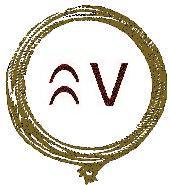 |
Homestead & Miniature Cattle Directory Homestead Cattle Association Mini Cattle Registry Bucking V Outfit, LLC. enterprises, est. 1990, Yellowstone County, Montana |
this report was first published online March 2017 by author Donna Grace
Declaration of Conflicting
Interests: The author declares no potential conflicts of interest
with respect to the research, authorship, and/or publication of this report.
Funding: The author received no financial support for the research,
authorship or publication of this report.